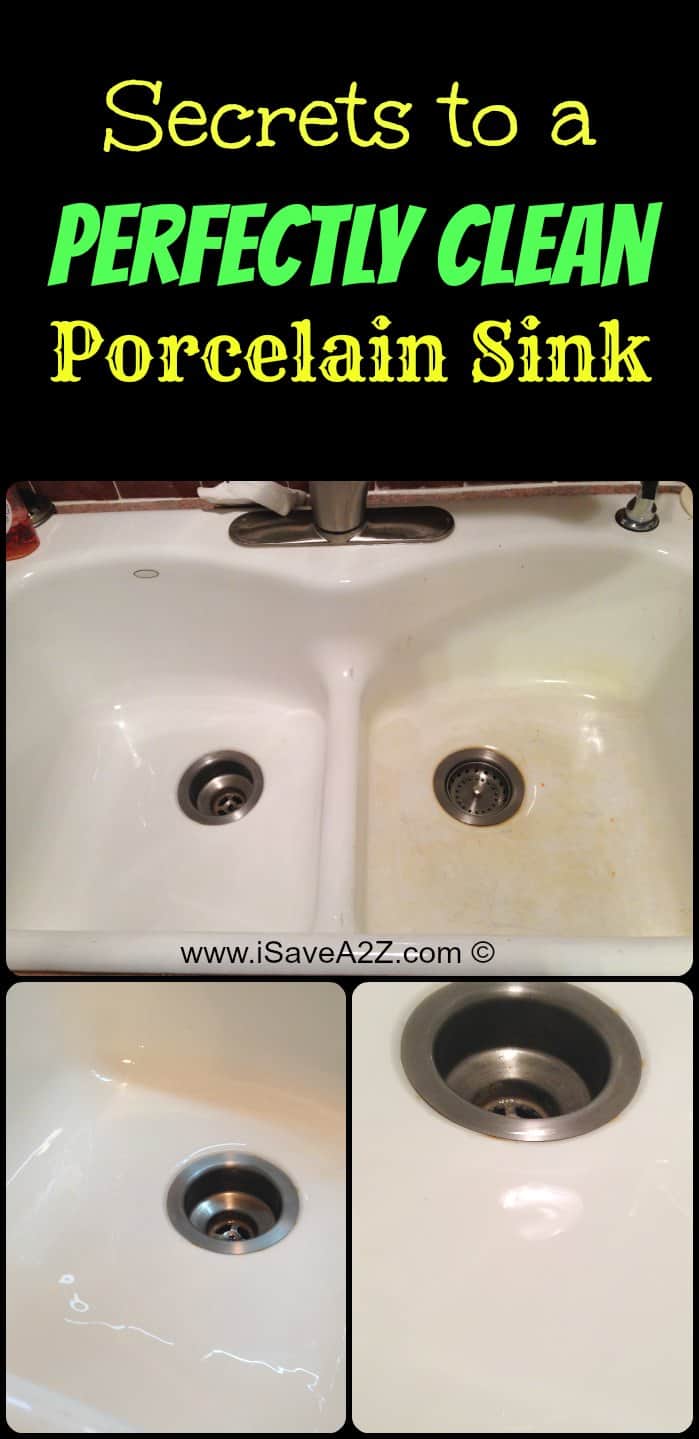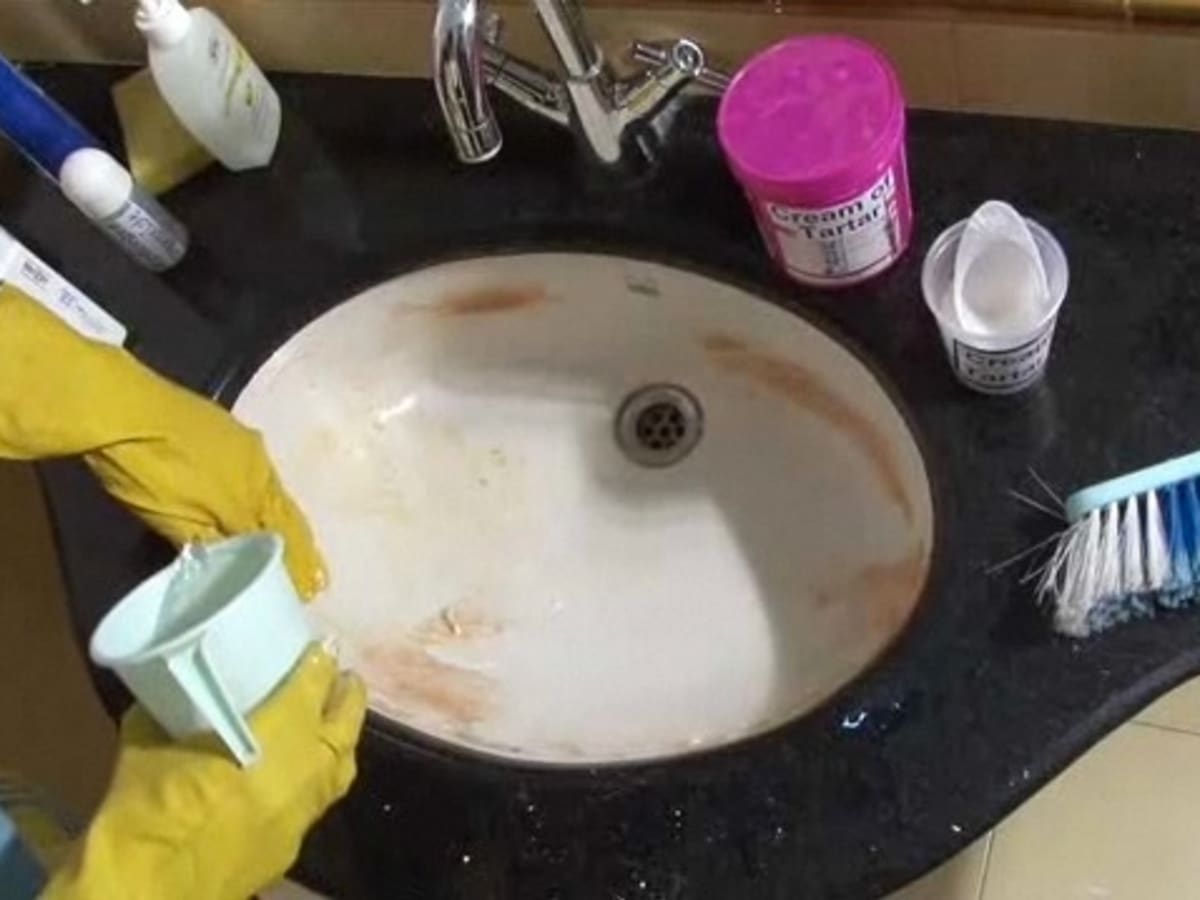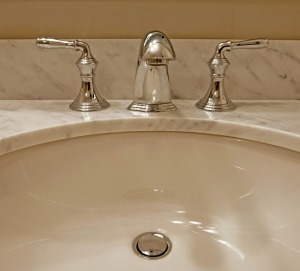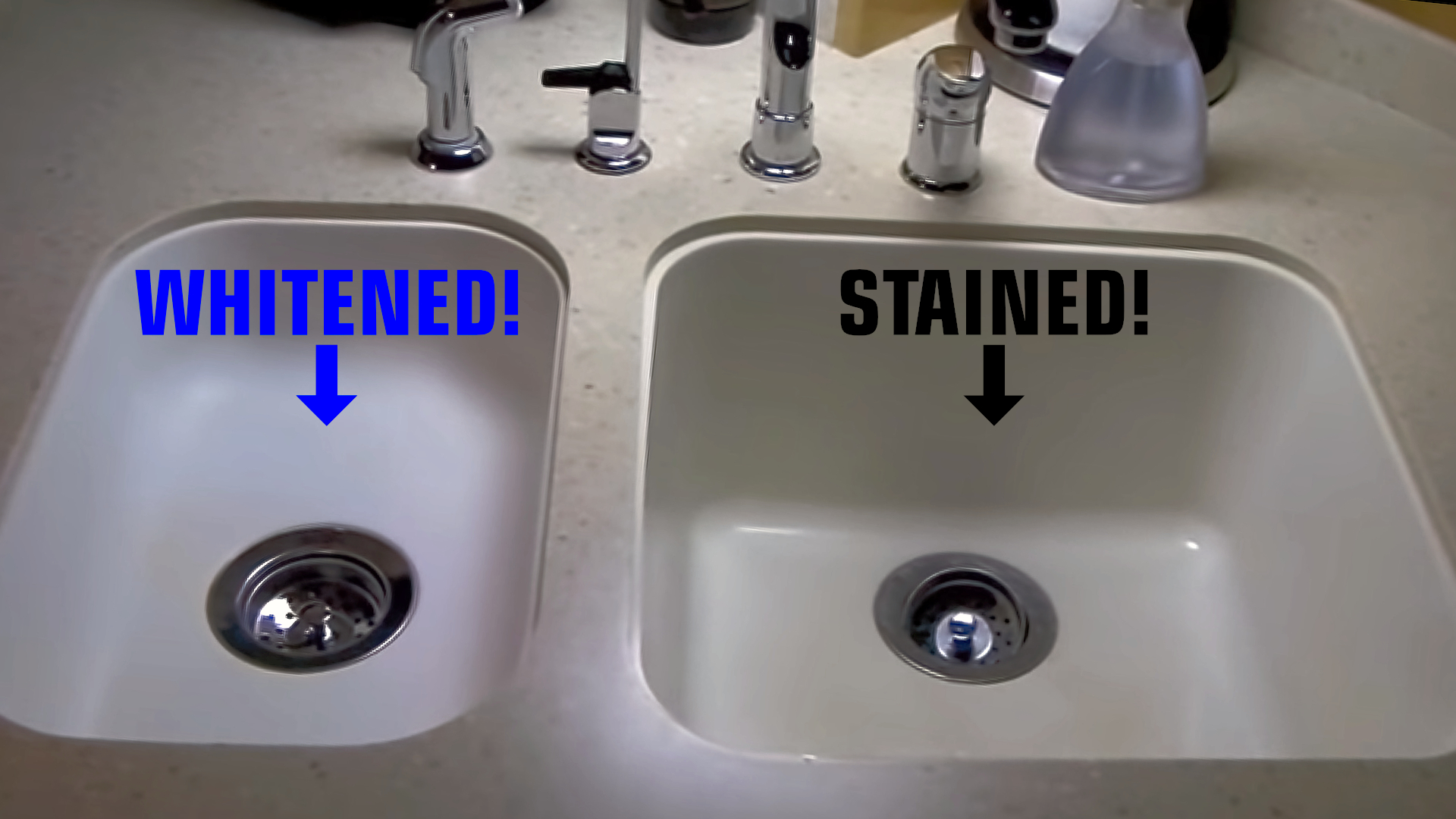Understanding Common Bathroom Sink Stains
A clean and sparkling bathroom sink adds beauty and functionality to any bathroom. However, over time, various stains can mar its appearance and make it look dull and unattractive. Understanding the different types of stains that commonly occur in bathroom sinks is the first step towards effective removal. By identifying the culprits behind these stains, you can choose the appropriate cleaning methods and products to restore your sink’s pristine condition. Below are the most common types of bathroom sink stains and provide insights on how to deal with them effectively.
- Hard Water Stains: One of the most prevalent types of bathroom sink stains is caused by hard water. Hard water contains minerals like calcium and magnesium that, over time, can leave unsightly white deposits on your sink’s surface. To remove hard water stains, you can make a solution with equal parts white vinegar and water. Apply this mixture to the stained areas, let it sit for a few minutes, and then scrub gently with a soft cloth or sponge. Rinse thoroughly with water and repeat if necessary.
- Rust Stains: Rust stains can occur in bathroom sinks, especially if the sink is made of metal or has metal components. These stains are typically caused by the presence of iron or other minerals in the water. To remove rust stains, you can use a mixture of lemon juice and salt. Apply the mixture to the stained areas, let it sit for a few minutes, and then scrub gently with a soft brush. Rinse thoroughly and repeat the process if needed. Alternatively, you can also find commercial rust removers specifically designed for bathroom surfaces.
- Soap Scum: Soap scum is a combination of soap residue, minerals, and dirt that can accumulate on the surface of your bathroom sink over time. It can leave a filmy layer that is not only unsightly but also difficult to remove. To tackle soap scum stains, you can create a paste using baking soda and water. Apply the paste to the stained areas, let it sit for a few minutes, and then scrub gently with a sponge or brush. Rinse thoroughly with water and repeat if necessary. For stubborn soap scum, you can also use vinegar or specialized bathroom cleaners.
- Toothpaste and Makeup Stains: Bathroom sinks often bear the brunt of toothpaste splatters and makeup spills. These stains can be stubborn and require a bit of extra effort to remove. To tackle toothpaste and makeup stains, you can use a mixture of dish soap and warm water. Apply the solution to the stained areas, let it sit for a few minutes, and then scrub gently with a sponge or cloth. Rinse thoroughly with water and repeat the process if needed. Additionally, a mixture of hydrogen peroxide and baking soda can be effective in removing tough makeup stains.
- Hair Dye Stains: Accidental hair dye stains can be a nightmare to remove from bathroom sinks, especially if they are left unattended for too long. To tackle hair dye stains, you can use a mixture of baking soda and water. Apply the paste to the stained areas, let it sit for a few minutes, and then scrub gently with a soft brush or sponge. Rinse thoroughly with water and repeat the process if necessary. If the stain persists, you can also try using a mild bleach solution or a specialized stain remover for hair dye.

Natural Remedies for Bathroom Sink Stain Removal
Dealing with bathroom sink stains doesn’t always require expensive commercial products. In fact, you can often find effective stain removal solutions right in your pantry or cleaning closet. Natural remedies offer an eco-friendly and cost-effective way to tackle stains without harsh chemicals. Let’s explore several DIY solutions using common household ingredients to remove bathroom sink stains. These natural remedies are not only effective but also safe for you and the environment.
Lemon and Baking Soda: Lemon and baking soda are powerful natural cleaners that can work wonders on various types of stains. To remove stains from your bathroom sink, cut a lemon in half and sprinkle baking soda on the cut side. Rub the lemon directly onto the stained areas, applying gentle pressure. Let the mixture sit for a few minutes, then scrub the stains with a soft brush or cloth. Rinse thoroughly with water and repeat if necessary. The acidic properties of lemon and the abrasive nature of baking soda help remove stains effectively.
Vinegar and Salt: Vinegar is a versatile cleaning agent that can be used to remove a wide range of stains, including hard water deposits and soap scum. Mix equal parts white vinegar and table salt to create a paste. Apply the paste to the stained areas of your bathroom sink and let it sit for about 15 minutes. Scrub the stains using a soft brush or sponge, then rinse thoroughly with water. Vinegar’s acidic properties dissolve stains, while salt acts as a gentle abrasive to aid in scrubbing.
Hydrogen Peroxide and Cream of Tartar: Hydrogen peroxide is a natural bleach and disinfectant that can be used to remove tough stains from your bathroom sink. Mix hydrogen peroxide with cream of tartar to form a paste. Apply the paste to the stained areas and let it sit for about 30 minutes. Scrub the stains using a soft brush or cloth, then rinse thoroughly with water. This mixture is particularly effective in removing stubborn stains like hair dye or makeup spills.
Baking Soda and Vinegar: The combination of baking soda and vinegar creates a powerful foaming action that can help remove tough stains from your bathroom sink. Sprinkle baking soda over the stained areas and then pour vinegar over it. Let the mixture sit for about 15 minutes to allow the foaming action to work. Scrub the stains using a soft brush or sponge, then rinse thoroughly with water. This method is effective for removing soap scum and mineral deposits.
Salt and Lemon Juice: The acidity of lemon juice combined with the abrasive nature of salt can help remove stains from your bathroom sink. Mix equal parts salt and lemon juice to create a paste. Apply the paste to the stained areas and let it sit for about 10 minutes. Scrub the stains using a soft brush or cloth, then rinse thoroughly with water. This method is particularly effective for removing rust stains.
The Best Commercial Options for Stubborn Stains
While DIY solutions can be effective for many bathroom sink stains, some stubborn stains may require the use of commercial cleaning products. These products are specifically formulated to target and remove tough stains, leaving your sink looking fresh and clean. Below are some of the best commercial options available for removing stubborn bathroom sink stains. These products have been proven to be effective and can save you time and effort in your cleaning routine.
All-Purpose Stain Removers: All-purpose stain removers are versatile products that can be used to tackle a wide range of stains, including those found on bathroom sinks. Look for a product that is specifically designed for use on sinks and fixtures. These cleaners often contain powerful ingredients such as hydrogen peroxide or citric acid that can break down and remove stubborn stains. Follow the instructions on the product packaging for the best results.
Calcium and Lime Removers: Hard water stains can be particularly challenging to remove from bathroom sinks. Calcium and lime removers are specially formulated to dissolve and remove mineral deposits, leaving your sink looking clean and shiny. These products typically contain ingredients like phosphoric acid or sulfamic acid that effectively break down and remove stubborn hard water stains. Be sure to follow the instructions and safety precautions provided by the manufacturer when using these products.
Rust Stain Removers: If your bathroom sink has rust stains, a specialized rust stain remover can help restore its appearance. These products contain ingredients like oxalic acid or hydrochloric acid that react with the rust and break it down, allowing it to be easily wiped away. It is important to follow the instructions carefully and take necessary safety precautions when using rust stain removers, as they can be corrosive.
Enzyme Cleaners: Enzyme cleaners are a great option for removing organic stains and odors from bathroom sinks. These cleaners contain enzymes that break down organic matter such as toothpaste residue, soap scum, or hair products. They are typically safe to use on a variety of surfaces and are effective at removing stains without the need for harsh chemicals. Apply the enzyme cleaner to the stained areas, let it sit for the recommended amount of time, and then wipe clean.
Bleach-Based Cleaners: Bleach-based cleaners can be effective for removing tough stains and disinfecting bathroom sinks. These cleaners contain sodium hypochlorite, which has powerful stain-removing and disinfecting properties. However, it is important to use bleach-based cleaners with caution and follow the instructions provided by the manufacturer. Avoid using bleach on colored sinks or surfaces that may be sensitive to bleach.
Tips and Tricks for Maintaining a Stain-Free Sink
Once you have successfully removed stains from your bathroom sink, it’s important to take steps to prevent future stains from occurring. By incorporating some simple tips and tricks into your cleaning routine, you can maintain a stain-free sink and enjoy a clean and pristine bathroom. Here are several effective strategies for preventing future stains on your bathroom sink.
Regular Cleaning: One of the most important steps in preventing future stains is to establish a regular cleaning routine for your bathroom sink. Make it a habit to clean the sink at least once a week, or more frequently if necessary. Regular cleaning helps to remove any build-up or residue that can lead to stains over time. Use a mild, non-abrasive cleaner and a soft cloth or sponge to gently clean the sink surface. Rinse thoroughly and dry with a clean towel to prevent water spots.
Avoid Harsh Chemicals: While it may be tempting to use strong chemicals to clean your bathroom sink, they can actually contribute to staining over time. Harsh chemicals can damage the surface of the sink and make it more prone to staining. Instead, opt for mild, non-abrasive cleaners that are specifically formulated for use on sinks and fixtures. Avoid using abrasive scrub brushes or scouring pads that can scratch the surface of the sink.
Wipe Up Spills Promptly: To prevent stains from setting in, it’s important to wipe up spills and splatters as soon as they occur. Whether it’s toothpaste, soap, or hair products, these substances can leave behind residue that can lead to staining if left untreated. Keep a clean cloth or sponge near the sink and quickly wipe away any spills or splatters. This simple step can go a long way in maintaining a stain-free sink.
Use Protective Mats or Trays: Consider using protective mats or trays in your bathroom sink to prevent direct contact between the sink surface and potentially staining substances. These mats or trays can catch any spills or splatters, making it easier to clean and preventing them from coming into direct contact with the sink surface. Look for mats or trays that are specifically designed for bathroom sinks and are easy to clean.
Regular Maintenance: In addition to regular cleaning, it’s important to perform regular maintenance on your bathroom sink to prevent staining. Check for any leaks or drips that could lead to water stains and address them promptly. Periodically inspect the sink for any signs of wear or damage and repair or replace any damaged parts. By staying proactive with maintenance, you can ensure that your sink remains in good condition and free from stains.
When to Call in the Experts for Deep Cleaning and Restoration
While regular cleaning and maintenance can go a long way in keeping your bathroom sink clean and stain-free, there may come a time when you need to seek professional help for deep cleaning and restoration. Professional cleaners have the expertise and specialized equipment to tackle tough stains and restore your sink to its original condition. We will discuss when it’s appropriate to call in the experts for deep cleaning and restoration of your bathroom sink.
Stubborn Stains: If you have tried DIY solutions and commercial cleaning products without success, it may be time to seek professional help for stubborn stains. Professional cleaners have access to powerful cleaning agents and equipment that can effectively remove even the most stubborn stains. They can assess the type of stain and choose the appropriate method to safely and effectively remove it without causing damage to your sink.
Hard Water Deposits: Hard water deposits can be particularly challenging to remove from bathroom sinks. Professional cleaners have the expertise and specialized equipment to tackle these deposits and restore the appearance of your sink. They can use methods such as descaling or steam cleaning to effectively remove the mineral build-up caused by hard water. Professional cleaners can also advise you on water softening options to prevent future deposits.
Deep Cleaning and Sanitization: Over time, bacteria, mold, and mildew can accumulate in hard-to-reach areas of your bathroom sink, leading to unpleasant odors and potential health hazards. Professional cleaners can perform deep cleaning and sanitization procedures to eliminate these issues. They have the necessary tools and knowledge to access and clean areas that are difficult to reach, ensuring a thorough and hygienic cleaning of your sink.
Restoration and Repairs: If your bathroom sink has suffered from significant damage or wear, professional cleaners can offer restoration and repair services. They can assess the condition of your sink and provide solutions to restore its appearance and functionality. This may include resealing, regrouting, or even replacing damaged parts. Professional restoration can bring new life to an old or damaged sink, extending its lifespan and improving its overall appearance.
Time and Convenience: Sometimes, it simply comes down to time and convenience. Hiring professional cleaners for deep cleaning and restoration of your bathroom sink can save you valuable time and effort. Professionals have the expertise and equipment to efficiently and effectively clean your sink, allowing you to focus on other tasks or enjoy your free time. Additionally, they can provide a thorough and long-lasting cleaning that may be difficult to achieve on your own.
How To Get a Clean Porcelain Sink and Remove Rust Stains Too
How to Remove a Red-Brown Rust Stain from a Bathroom Sink – Howcast
Removing Hard Water Stains in Sinks – Creative Homemaking
How to Remove Stains from Cultured Marble Sinks and Shower Surrounds Ep. 80
Removing Stains from a Porcelain Sink ThriftyFun
How Do You Clean a Badly Stained Corian Sink?
Ways to Clean a White Sink
Related Posts:
- Bathroom Sink Faucets With Porcelain Handles
- How To Make A Wooden Bathroom Sink
- Install Undermount Bathroom Sink Granite Countertop
- Ada Bathroom Sink Vanity
- Fix Bathroom Sink Faucet
- Bathroom Sink Is Not Draining
- Bathroom Sink Drain Assembly Instructions
- Single Bowl Bathroom Sink With Two Faucets
- American Standard Bathroom Sink Drain Assembly
- American Standard Boulevard Pedestal Bathroom Sink Set










